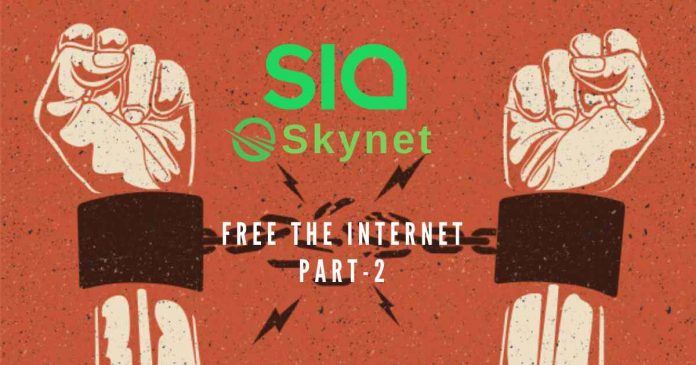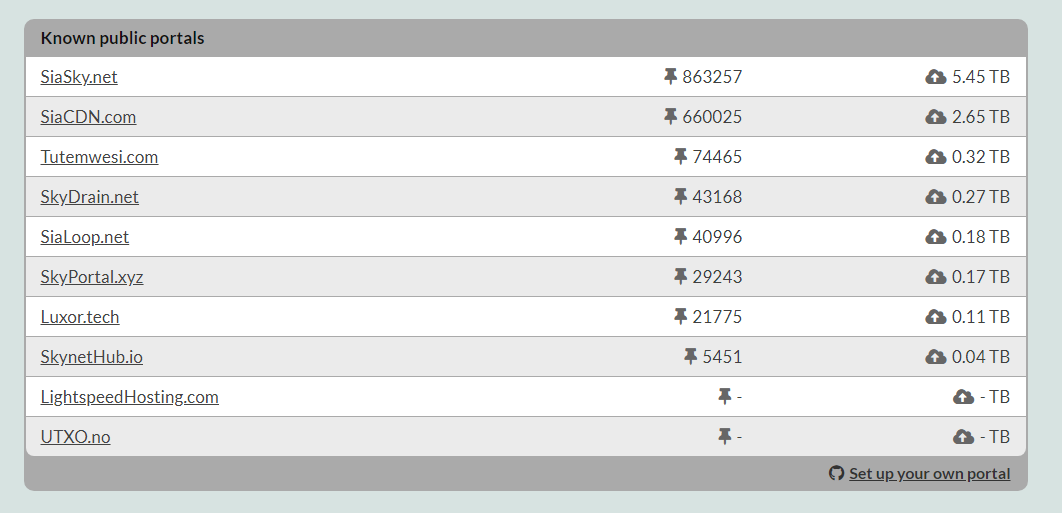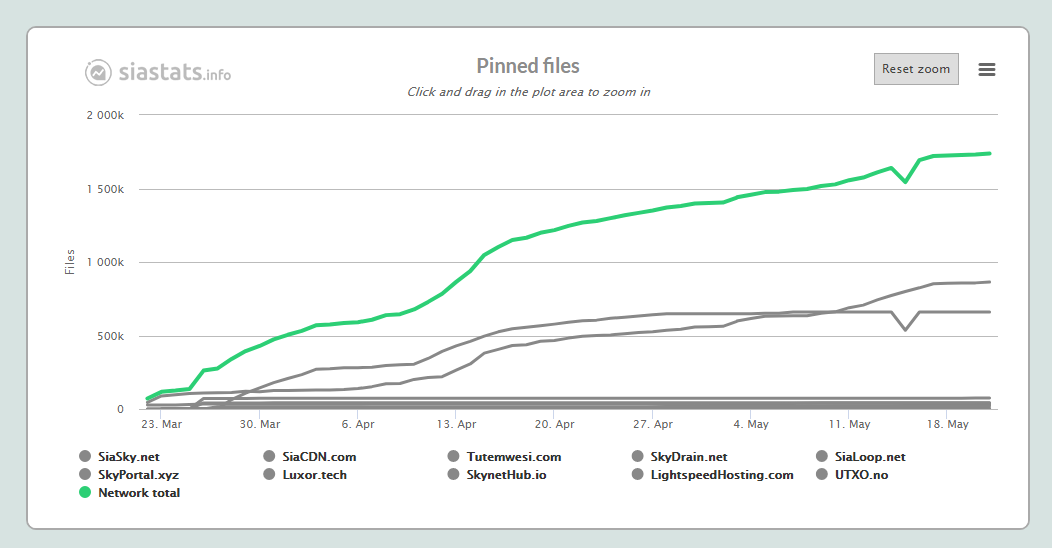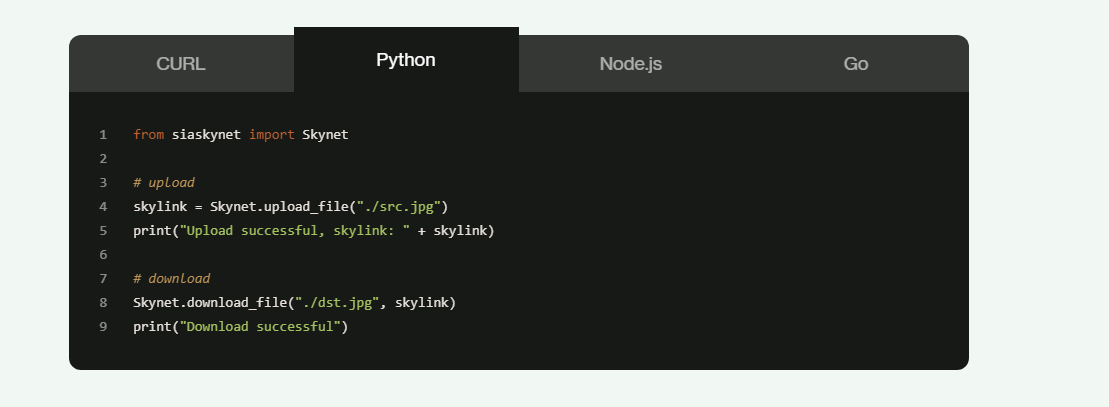In the first part of “The Age of Decentralized Internet” we talked about Sia and how it overcomes the challenges posed by centralized cloud storage platforms like AWS, Azure, and Google Cloud. Although the chances are remote, for some of you, the need for decentralized cloud storage like Sia on top of the internet might still sound absurd.
If that’s the case, you need to face the reality of how your digital data is at the mercy of internet giants like Facebook and YouTube. And how Sia SkyNet hands you the complete control of your digital data. And in case you already believe in Sia’s vision, SkyNet is all that you need.
Let us do some introspection before we check out Sia SkyNet in detail.
How many of you feel familiar with messages like this?

OR this
Still can not post on YouTube because of 'Harmful and Dangerous Content' video explaining how Bitcoin Mining Works. @TeamYouTube can you help? pic.twitter.com/aZpCEVOx5U
— Altcoin Buzz (@Altcoinbuzzio) December 29, 2019
How does it feel that one fine morning you wake up and see your account or channel delisted or struck off? Scary isn’t it?
That is why Sia’s SkyNet makes absolute sense right now. This final article in this 2-part series is going to answer the following questions:
- How does SkyNet work? What is the purpose?
- What is possible with it?
- How much does SkyNet storage and bandwidth cost?
- What makes it better than IPFS (InterPlanetary File System)?
Explaining SkyNet and its purpose
SkyNet is basically a public data layer for the internet supporting file-sharing and content delivery. Built on top of the Sia cloud storage network, it offers the users the infrastructure to host apps and web portals in a completely decentralized manner.
What does SkyNet solve?
For an everyday internet user, SkyNet may sound like some technology gibberish. But it actually addresses some pertinent issues that an internet user faces every day.
Problem #1
This is the one we talked about at the beginning and the related issues. Basically the issue of de-platforming, changing terms of services, infrastructure bills, advertisements, and much more.
Solution
Using SkyNet, a user can upload his files for which he receives a unique universal link that he can use to share and retrieve the files later. A user can thus upload and download files like images, movies, JSON (JavaScript Object Notation) blobs, medical formats, and even full web-apps. More importantly, the file remains available for download irrespective of the uploader being online or not. And moreover, one can view or download the stored file any time until at least one of the uploaders has sponsored or pinned it.
As a high-performance data layer, it supports uploading/downloading/streaming of data-heavy files like 4K videos that go up to 100’s of GBs. A typical download on SkyNet starts in under 500 milliseconds. And the streaming rates scale up to 1 gigabit per second (Gbps). And that makes it suitable even for industry-grade is the use cases.
Source: Siasky.net
How does it work?
The most important aspect is that all the uploaded content is censorship resistant because SkyNet is an independent data layer. So a user will not face issues like content being de-platformed. Furthermore, it is powered by portals. That is basically a low-cost server that helps everyday users interact with SkyNet. Besides, the portal eliminates the need for any special software to use it.
Essentially, anyone can run a SkyNet portal. It will be a normal Sia node and the files can be uploaded and pinned only via Sia nodes. It manages file contract creation with every host. At the time of the press, running a SkyNet portal costs $10 per month.
Currently, SkyNet has 10 web portals by different developers. A SkyNet user can choose to upload content on any of the web portals. However, if he is not satisfied with any of these, he can always host his own web portal.
Problem #2
If you publish a post only on Facebook, you cannot access the same on Twitter or YouTube. This is because these are separate centralized entities.
Solution
With SkyNet your content is not at the whims of centralized organizations. SkyNet basically breaks this barrier because a content posted in a web portal is accessible from any other web portal. That’s because each uploaded file generates a universal link that anyone can view from any portal until it remains sponsored.
Problem #3
The centralized portals bombard industry-grade users with advertisement fees, infrastructure fees, and whatnot.
Solution
SkyNet costs 10x lower than most of the centralized providers. Moreover, the bandwidth costs are 100x lower and that too without sacrificing performance or reliability. This is made possible only because of the underlying Sia decentralized cloud storage set up.
SkyNet’s success till now
To date 1,738,380 files have been pinned on SkyNet. And there are 10 known and popular web portals.
Source: siastats.info
The most popular web portal among all is SiaSky.net by team Nebulous. It has almost 863,257 pinned files.
Source: siastats.info
Since its launch on February 18 this year, SkyNet has come a long way. Moreover, it has seen a sudden bump in its usage from the month of April.
Source: siastats.info
What is possible with SkyNet?
Till now we have learned SkyNet is data agnostic and can handle multiple file types and sizes that span from few KBs to 100’s of GBs.
Host full applications
It is important to note that SkyNet can also be used to host full applications too. If you have a link to the app, you can load it into your web browser and use it without actually having to connect over a centralized website.
It’s really a cool feature of SkyNet applications that they are not your typical web apps but they do have access to upload and download points.
Integrate SkyNet into applications
For developers, SkyNet offers an API (application programming interface) so that it can be used in their own applications. So, if as a developer you have an already developed app, it offers SDKs (software development kits) in 4 different programming languages for seamless integration.
The SDKs are available for Nodejs, Java, Go, and Python. As a matter of fact, for Python SDK, the SkyNet integration is possible with just two lines of code. The aim is to set up a web portal within 3 minutes.
Source: Siasky.net
It is thus a boon for DApps (decentralized applications) as the developers can be sure that their storage layer is completely decentralized.
The SkyNet data layer can also be integrated with centralized apps without compromising on reliability and performance.
How secure is your data on SkyNet?
SkyNet is a layer-2 infrastructure over Sia which is a fully decentralized cloud storage network. Normally, the data stored on Sia is segmented, encrypted, and then distributed to hosts across the globe.
But as the data over it is publishing data, it is mostly unencrypted. But it does have its own encryption algorithm known as XChaCha20. Encryption is exclusively in place for cases where there is a need for restriction of data visibility to a specific set of content consumers.
Ready for mass adoption product
SkyNet is one of the very few blockchain layer-2 products ready for mass adoption. As the ecosystem offers simple API and SDKs for popular programming languages, it becomes very easy for developers to integrate decentralized cloud storage into their applications. And most importantly, an everyday internet user can access any kind of file without dealing with cryptocurrency or having to run full Sia nodes.
How much does SkyNet storage and bandwidth cost?
SkyNet pricing model is much unlike the traditional players like AWS. Most of the traditional players burden the content uploader with all sorts of costs. But on SkyNet, the pricing model is more consumer-oriented. What does that mean?
Storage cost
Let us say you sponsor a file on SkyNet, you will be charged $2 per terabyte per month.
Bandwidth cost
If you are the content consumer that means if you download a file or a video, you will have to pay $1 per terabyte per month. This is actually only 1% of the AWS S3 content consuming cost.
Data download charges outside of the AWS region are $0.02 / GB. Theoretically speaking, if you have uploaded a piece of content on AWS and it goes viral, you might go bankrupt.
Sponsoring duration
The sponsoring duration for any file on SkyNet is 3 months. And it works on auto-renewal mode. Once you upload data to your node, even if you refresh the file once in a month, this will ensure there is no downloading issue and it stays sponsored.
Competition: IPFS vs SkyNet
We must agree Team Nebulous was not the first one to think about this type of CDN (content delivery network) and file sharing setup. IPFS is a close competitor of SkyNet but the latter has some major advantages over IPFS.
- When you use SkyNet, even if you walk away, the files still remain there. This is because it is a host production-grade content layer. A user does not have to worry about infrastructure, the network does it for you. On IPFS, the files generally disappear within 24 hours.
- The performance of IPFS is not even closer to SkyNet. IPFS is not capable of handling video while it only offers speed to the comparison of Amazon S3.
The final takeaway
Currently, SkyNet allows anyone to upload a file to any web portal. In fact it has some very simple to use web apps Pastebin-like text uploader. Whether in the near future, there will be uploading limits or not that is not sure. But one thing is for sure. SkyNet is about to trigger a massive adoption in the near future as it allows files and applications to be deployed within seconds!
—
Disclaimer
The information discussed by Altcoin Buzz is not financial advice. This is for educational and informational purposes only. Any information or strategies are thoughts and opinions relevant to accepted levels of risk tolerance of the writer/reviewers and their risk tolerance may be different than yours. We are not responsible for any losses that you may incur as a result of any investments directly or indirectly related to the information provided.
Do your own due diligence and rating before making any investments and consult your financial advisor. The researched information presented we believe to be correct and accurate however there is no guarantee or warranty as to the accuracy, timeliness, completeness. Bitcoin and other cryptocurrencies are high-risk investments so please do your due diligence. Copyright Altcoin Buzz Pte Ltd. All rights reserved.


































